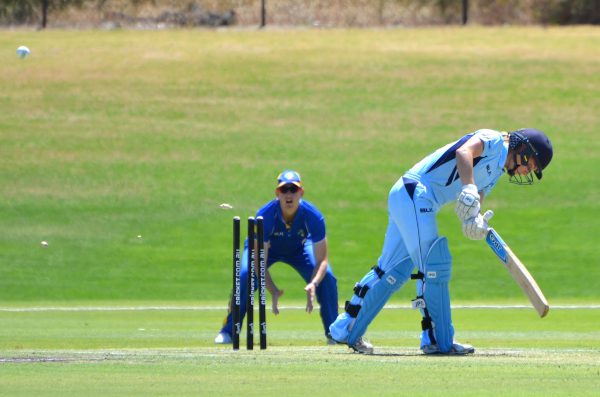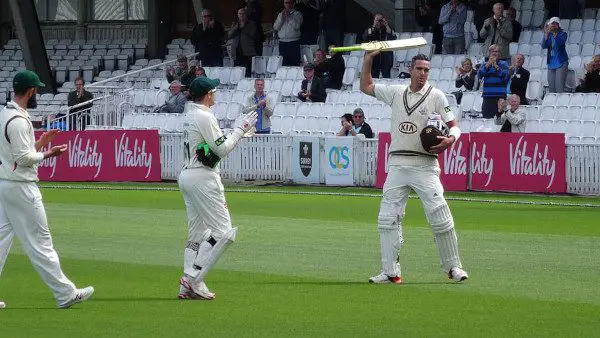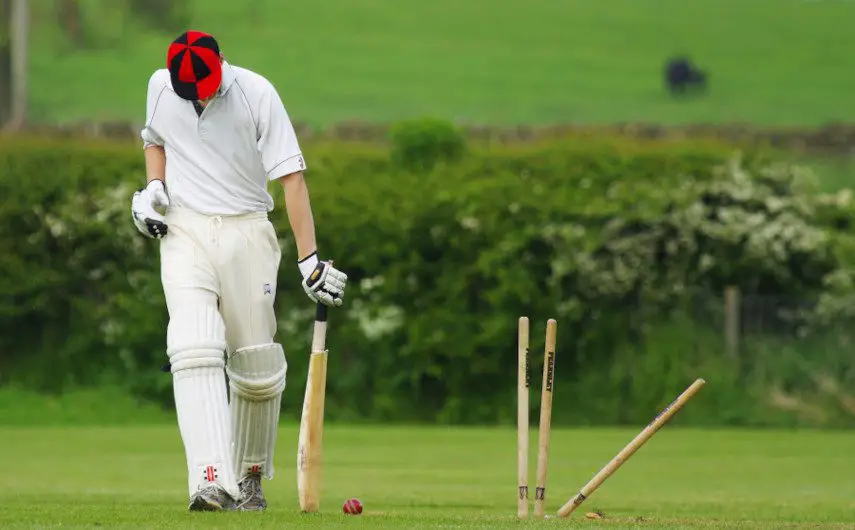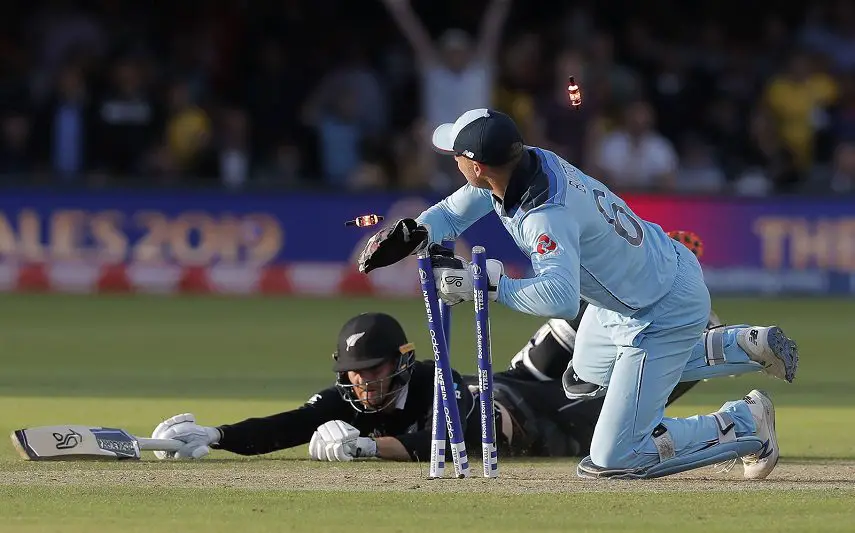Table of Contents
An LBW decision is probably the hardest for an umpire to make. There are a number of factors to take into account when deciding whether a batsman is out or not out and they have just a fraction of a second to make their judgement.
What is LBW in Cricket?
LBW stands for Leg Before Wicket and is one of the ways in which a batter can be dismissed. Essentially, if the ball hits the pad or any part of the body, excluding the gloves, without hitting the bat first, the batsman can be given out.
The main question for the umpire is whether that ball would have hit the stumps had the pad, or other part of the body not intervened. There are, however, a number of conditions to be met before that decision can be made.
History of LBW Rules
In the very early days of cricket, the LBW law simply didn’t exist. This meant that batsmen could allow the ball to hit their pads without fear of being dismissed and many took advantage of a lack of a ruling.
By the 1770s, it appears that this was becoming a problem. It’s easy to understand why a batsman might want to defend their wicket in this way. If the batting team is looking to draw the game, why even bother to play a shot? They could obstruct the stumps and allow the ball to hit their pads and they couldn’t be given out.
A change was needed and it came along in 1774. This was the first time that the phrase leg before wicket was seen in the laws of cricket.
There have been many changes made since those early days and further, significant updates came along in 1839, 1935 and 1972.
In 1935, the law was changed so that the batsman could be given out, even if the ball had pitched outside of off stump. Prior to that point, the ball had to pitch and hit wicket to wicket.
The 1972 ruling was brought in as an attempt to deal with negative play on behalf of the batsman. Prior to that stage, a batsman was able to allow the ball to hit their pad without playing a shot. Provided that the ball was outside the line of the off stump when it struck the batsman’s pad, they could not be adjudged LBW.
Under the new law, the LBW appeal could be upheld if the umpire felt that the ball was hitting the stumps.
Conditions for LBW
Of course, with modern technology, the umpires have more help when it comes to adjudicating on LBW appeals. But they cannot rely on the Decision Review System entirely. The standing official has to make the initial decision and these are the points that they need to consider.
There are six preliminary conditions to consider before an umpire can make a decision and these are:
- Is the Delivery Legal?
- Did the Ball Pitch Outside Leg Stump?
- Has the Ball hit the Bat?
- Did the Ball make contact with the Batsman’s pad or other part of their Body (excluding the glove?)
- Is the Ball in line with the Stumps?
- Would the Ball go on to hit the Wicket?
Is the Delivery Legal?
If the bowler delivers a no ball for any reason, the batter cannot be out LBW. The umpire must be sure that the delivery is legal under the LBW rule.
Of course, a wide is another illegal delivery but, by definition, the ball would not be going on to hit the stumps.
Where has the Ball Pitched?
A number of LBW decisions can be quickly made depending on where the ball has pitched.
If the ball pitches outside of the leg stump of the striker’s wicket, the batter cannot be out LBW.
Has the Bowling Side Appealed?
It’s unlikely that the bowling side won’t appeal if an LBW decision seems likely but, under the lbw rule, they must ask the question.
If, for any reason, there is no appeal from the bowling side, a batter cannot be given out LBW.
Has the Ball hit the Bat?
If the ball struck the bat or glove before hitting the batsman’s pad or another part of the batsman’s body, the batter should be given not out.
An LBW appeal should not be upheld if the ball has hit either the bat or the glove.
Has the Batter Played a Shot?
This question needs to be answered if the ball has struck the batter outside the line of off stump. If they are playing a shot to the delivery, they should not be given out LBW.
If, however, the batter is not playing a stroke, then they can be given out.
Would the Ball be Going on to Hit the Stumps?
This is the final point to consider. In the umpire’s opinion, would the ball be going on to hit the stumps?
If all five of the previous criteria were met and the ball looks to be hitting, the decision should be Out. Otherwise, it’s a Not Out.
How to Judge an LBW
Those six considerations are the key to making a correct LBW decision. I’ll take the first two to begin with as these are quite simple to assess.
Firstly, if the delivery is illegal (i.e. a No Ball) then the batsman cannot be given out LBW. As we’ve seen with the no ball ruling, the majority of dismissals are not available to the bowling side. Similarly, if the ball pitched outside of leg stump then an LBW appeal should not be upheld.
Moving forward, the rest of the considerations are trickier to judge and that’s why umpires have to be so skilled in their jobs. If the ball hits the bat or the glove, the decision should be Not Out but it can be difficult to pick up those faint edges.

It’s also virtually impossible for a club cricket umpire to tell when a ball has brushed the glove and that’s why we should have so much respect for the officials in the professional game.
If the answer is ‘yes’ to the final three questions, the decision should be Out. If the ball hit the pads or another part of the body without touching the bat or glove, if it’s in line with the stumps and would have gone on to hit the wicket, an LBW appeal should be upheld.
Umpire’s Interpretation of the Laws
The laws of cricket can be open to interpretation at times but those relating to Leg Before Wicket are relatively clear. As we have seen, there are a lot of processes to take into account and this decision can be the hardest in cricket but the six considerations are very specific.
There are, however, further questions to ask when an appeal is made. These are less obvious to the standing umpires and these are listed below.
An important point to remember is that, while there is DRS technology in place which we will discuss later on, this isn’t available in the majority of matches. We all watch live games on television but, when the TV cameras aren’t covering a live game, the DRS reviews are not available.
That’s also the case in club cricket where I hope this guide will be of use. The laws are clear and it’s down to the umpire’s judgement as to whether a leg before wicket decision should be called Out or Not Out.
Further Considerations for LBW
One of the hardest things for the umpire to judge relates to height.
The ball may be straight and on a middle stump line but if the bounce were to take the delivery over the stumps then the decision should be Not Out.
The match conditions can offer some good clues here. If the wicket is hard and bouncy, there is more chance of those deliveries clearing the stumps due to their height. In contrast, a low and slow wicket means that there is less bounce and more chance of those LBW appeals being upheld.
Umpires can also watch the early deliveries: It’s particularly useful if they are wide of the stumps and the ball passes through to the wicketkeeper. By judging the bounce and the carry, those umpires can make a better judgement when an LBW appeal is made.
Aside from the six main considerations listed above, there are some other things to be taken into account when adjudging an LBW decision:
- In the majority of cases, the batsman should not be given out if the ball is striking them outside the line of off stump but there is one exception to this law.
- If the batter is not playing a shot and the ball hits them outside of that off stump line, they can be given out LBW. If the umpire decides that they are making a genuine attempt to play the ball, the decision should be Not Out.
- On very rare occasions, the ball may strike the bat and the batter’s pad at the same time. If this is the case, the umpire shall determine that the ball has hit the bat first and the decision should, therefore, be Not Out.
- There is one more consideration to mention and that concerns the point where the ball makes contact with the batsman’s pads or other part of their body. If that batter advances down the wicket and the ball has more than 2.5 metres to travel when it strikes the pad, the decision should be Not Out.
This is quite a contentious ruling but it allows for potential deviation due to late swing or spin. It may also suggest that the technology that we are about to discuss in the next section isn’t 100% accurate and that may be the case.

DRS Rules for LBW
The decision review system (DRS) allows players from either side to review an on-field umpire’s decision if they disagree with it.
In the case of leg before wicket calls, the on-field officials will subsequently refer to the third umpire who will go through the same processes as listed above.
- Firstly, they will judge if the delivery is legal.
- The next point to clarify is whether the batsman has hit the ball and this can be determined by using technology. Hot spot and the snickometer will tell the third umpire if bat or glove is involved.
- Next, the TV umpire will ask the director to go to ‘ball tracking’. This is a TV replay which shows where the ball pitched and whether or not it would have gone on to hit the stumps.
Based on all of this information, the third umpire can then uphold the original verdict or go back to the standing umpire and ask them to overturn their decision.
What is ‘Plumb’ LBW?
The term ‘plumb’ is not an official wording that appears in any of the laws but you will hear this phrase used a lot by players and commentators.
Plumb LBW is an LBW call that seems obvious to the naked eye and, in most cases, the ball would probably be going on to hit the middle stump.
The term comes from the definition of plumb which is used in the construction industry. A plumb line will tell a builder or decorator that the line and/or angles are perfectly straight. Therefore, a plumb LBW occurs when there is a perfectly straight delivery which is likely to take out the middle stump.
How Common is it to be Given Out LBW?
Cricket is a sport where statistics play a huge part and it’s easy to find figures relating to dismissals. While the number of LBW dismissals has increased since DRS was brought in, this remains the third most common out of the 10 methods in which to get out.
Caught is first on the list at around 56%, depending on the format of the game. Bowled is second at around the 20% mark while LBW comes in at 14%. Those are interesting statistics but some batsmen can be more prone to LBW than others and you can go down lots of rabbit holes in trying to analyse those figures further.


